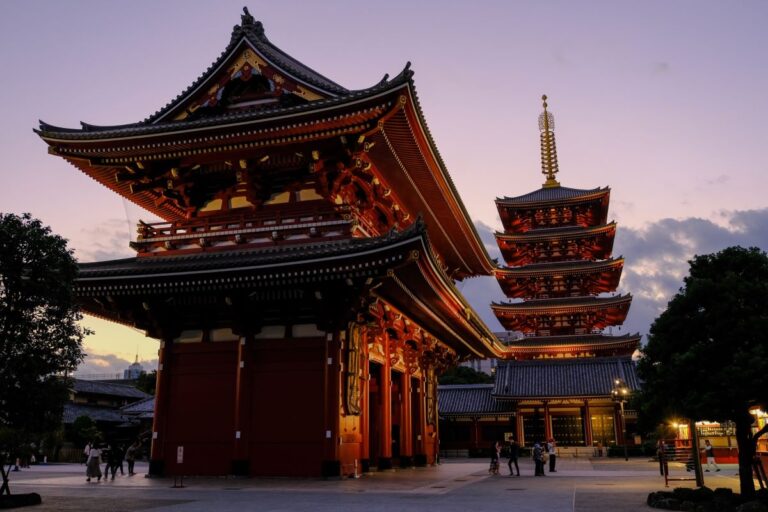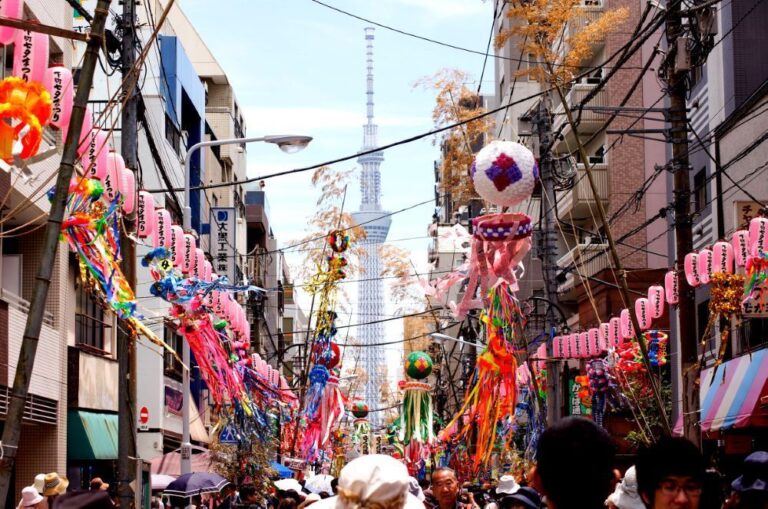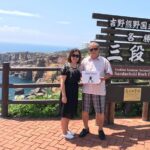The annual 47 Rōnin Winter Festival, also known as the Akō Gishi Sai Festival, takes place in Tokyo, Japan. This event, held in mid-December at the Sengakuji Temple, commemorates the 47 rōnin, legendary figures in Japanese history.
These samurai avenged their lord’s death by killing Lord Kira Hozukenosuke and subsequently carried out seppuku. The festival, which has been celebrated for centuries, attracts numerous locals and travelers who participate in various activities, including graveside ceremonies and memorial services.
Plus, the Akogishi Kinenkan Memorial Museum within the temple provides insight into the incident. The town of Ako also celebrates the tale with the Gishisai Festival, featuring illuminated streets and traditional festival stalls.
Key Takeaways
- The 47 Rōnin Winter Festival in Tokyo, known as the Akō Gishi Sai Festival, is an annual event held in mid-December at Sengakuji Temple to commemorate the 47 rōnin.
- The festival features graveside ceremonies, memorial services, traditional music and dance performances, theatrical reenactments of the 47 rōnin’s story, and tea ceremonies.
- The Akogishi Kinenkan Memorial Museum, located within Sengakuji Temple, provides insight into the incident and showcases artifacts related to the 47 rōnin, serving as an educational resource for visitors.
- The significance of the 47 rōnin lies in their unwavering loyalty and sacrifice, as they avenged their lord’s death by killing Lord Kira, turned themselves in, and performed seppuku, symbolizing honor, loyalty, and freedom.
What is it?
The annual 47 Rōnin Winter Festival, known as the Akō Gishi Sai Festival, is a vibrant event held in mid-December at Sengakuji Temple in Tokyo, which celebrates the famous tale of loyalty and sacrifice displayed by the 47 rōnin.
This festival has been an integral part of Tokyo’s cultural landscape for many years, attracting both locals and travelers who seek to experience the rich history and traditions of Japan.
The festival features various activities and performances, including traditional music, dance, and theatrical reenactments of the 47 rōnin’s story. Visitors can also participate in tea ceremonies, visit the gravesite of the rōnin, and explore the Akogishi Kinenkan Memorial Museum, which showcases artifacts related to the incident.
The Akō Gishi Sai Festival offers a captivating glimpse into the values of loyalty, honor, and sacrifice that are highly revered in Japanese culture.
History of the 47 Rōnin
Famous figures in Japanese history, the 47 Rōnin, became renowned for their unwavering loyalty and ultimate sacrifice. Their story, known as the Tale of the 47 Rōnin, has captivated audiences for centuries.
In 1701, their lord, Asano Naganori, was forced to commit seppuku after attacking Lord Kira Yoshinaka in a fit of rage. In order to avenge their lord’s death, the 47 samurai meticulously planned and executed a successful attack on Lord Kira, resulting in his demise.
Knowing that their actions would be met with severe consequences, the 47 Rōnin willingly turned themselves in to the authorities and were sentenced to perform seppuku. Their unwavering loyalty to their lord and their willingness to sacrifice themselves for justice have made them legendary figures in Japanese history, embodying the ideals of honor, loyalty, and freedom.
Traditional Winter Festival
Held annually in mid-December at Sengakuji Temple, the 47 Rōnin Winter Festival is a significant event that commemorates the actions of the 47 samurai. This vibrant festival in Tokyo is known as the Akō Gishi Sai Festival and has been celebrated for centuries.
Thousands of locals and travelers gather to pay their respects to the 47 rōnin, who pledged loyalty and sacrifice by avenging their lord’s death and killing Lord Kira Hozukenosuke. The festival includes a graveside ceremony, a tea ceremony, and a memorial service at the main hall.
Attendees also have the opportunity to visit the Akogishi Kinenkan Memorial Museum, located within Sengakuji Temple, which displays artifacts related to the incident and provides insight into the mission.
This traditional winter festival is a testament to the enduring spirit of loyalty and freedom.
Frequently Asked Questions
How long has the Sengakuji Temple been holding the 47 Rōnin Winter Festival?
The Sengakuji Temple has been holding the 47 Rōnin Winter Festival for centuries. The annual event includes a graveside ceremony, tea ceremony, and memorial service, attracting thousands of locals and travelers.
What is the significance of burning incense sticks during the Winter Commemoration at Sengakuji Temple?
Burning incense sticks during the winter commemoration at Sengakuji Temple holds significant cultural and religious symbolism. It is a gesture of respect and remembrance for the 47 rōnin, symbolizing purification, offering prayers, and paying homage to their loyalty and sacrifice.
What artifacts are on display at the Akogishi Kinenkan Memorial Museum?
The Akogishi Kinenkan Memorial Museum, located within Sengakuji Temple, displays artifacts related to the incident, including letters and armor. It also features videos that explain the temple’s history and provide insight into the mission.
How does the local celebration in Ako, the Gishisai Festival, differ from the 47 Rōnin Winter Festival at Sengakuji Temple?
The Gishisai Festival in Ako differs from the 47 Rōnin Winter Festival at Sengakuji Temple by being a local celebration held in Ako, featuring traditional festival stalls, street food, and lantern-lit streets.
Are there any specific rituals or customs associated with the annual Winter Commemoration at Sengakuji Temple?
Rituals and customs associated with the annual winter commemoration at Sengakuji Temple include a graveside ceremony, tea ceremony, and a memorial service at the main hall. Visitors burn incense sticks as a sign of respect.
The Sum Up
To sum it up, the vibrant city of Tokyo hosts the annual 47 Rōnin Winter Festival, which pays homage to the famous tale of loyalty. This historic event takes place at the Sengakuji Temple and attracts both locals and travelers alike.
Through various activities such as graveside ceremonies, tea ceremonies, and memorial services, participants can immerse themselves in the rich history of the 47 rōnin and their unwavering loyalty. The festival also offers the opportunity to visit the Akogishi Kinenkan Memorial Museum, providing a deeper understanding of this significant incident in Japanese history.
Plus, the Gishisai Festival in Ako adds to the festivities with its illuminated streets, traditional stalls, and delicious street food.
These celebrations serve as a reminder of the enduring spirit of loyalty and honor in Japanese culture.




